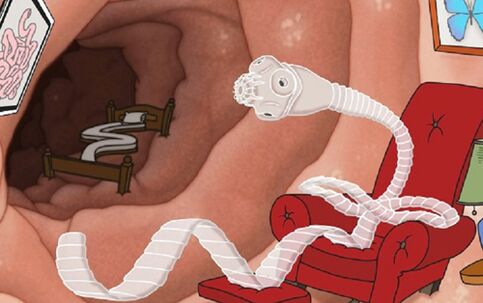
Intestinal parasites- These are helminths that parasitize in the human intestine.It can either be a parasite or several at the same time.The more helminth in the body, the more important the health becomes.The existing polyiuria leads to a complete exhaustion of the body for a long time.Some migrating representatives can clog the bile ducts and provoke mechanical jaundice.
List of intestinal parasites
In domestic practice, it is somewhat customary to divide all helminths into tropical and not -repre.
Tropical parasites can be found in countries with the corresponding climate in Africa in Southeast Asia.This includes schistosomes, Filaria, Wucheria and many others.You can only infect tropical helminths in the area of the corresponding country that try local kitchen dishes, using water from an unknown water supply source and neglecting the rules for sanitary and hygiene.
An infection with tropical helminthia from a healthy person from a sick person is impossible, since certain environmental conditions and the body of the intermediate host are necessary to complete the complete development cycle.
More than 300 parasites are currently known, around 100 of them are recorded on the European continent.A significant part of them parasitically parasitically in the intestine of a person.
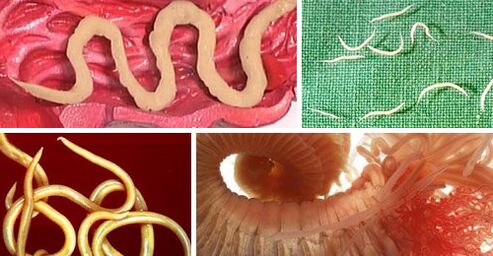
The most common version of the classification of intestinal parasites according to the structure of your body.The following classes are differentiated:
- Super (they are also called trematodes) - have a leaf hapte or oval shape.The main difference is the presence of suction cups;
- Band (they are also called cestodes) - can achieve a significant length (up to several meters);have the shape of a tip or a flat tape;
- Round (they are also called nematodes) - differ in the corresponding form.
One of the most relevant intestinal human helminthia is:
| Nematodes | Cestoden | Trematodes |
|
|
|
Each helminth is characterized by the stages of development and the change of several owners.
Symptoms of intestinal parasites
The clinical manifestations of the intestinal helminthiasis have a lot in common, so it is almost impossible to choose the diagnosis before the laboratory examination.In this regard, one can distinguish an acute and chronic form of helminthiasis and describe the corresponding clinical symptoms.
Acute phase
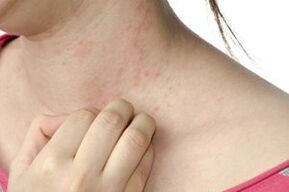
It is characterized by a pronounced general symptoms due to the effect of the parasite itself and by the reaction of the organs and systems of the host.To the most important symptoms:
- Subfebrilt temperature;
- Rashes of different intensity and species (stains, papules, rarer pustules and bleeding) often in combination with skin itch;
- Pain in the muscles and joints of a spilled nature;
- Swelling of the skin and subcutaneous fat;
- Abdominal syndrome (spilled pain in the stomach, nausea and repeated vomiting, long -term diarrhea without pathological contaminants).
The severity of the above -mentioned clinical characteristics is individual.One person can have a slight discomfort, and the other has a sharp deterioration in the state of health that cannot be unnoticed.
Chronic phase
It occurs in the absence of adequate treatment.Local (intestinal symptoms), which are associated with mechanical damage to the intestinal wall, come to the fore.General clinical symptoms are less pronounced.As a result of chronicle, helminthen are found:
- Violation of the absorption of nutrients;
- Inhibition of metabolic processes (exhaustion, anemia);
- Some helminths provoke the formation of non -load.
A spontaneous healing in the stage of the chronic phase of helminthiasis is almost impossible.
Characteristics of individual types of helminthia
Only one doctor can take over the development of one or the other helminthiasis.Characteristic clinical characteristics are only typical for certain types of helminths.For example:
| Eyelash |
|
| Askarida |
|
| Trichinosis |
|
| Quilostomidosis |
|
| Trichocephalose | Damage to the distal intestine (hemocolit); |
| Strongyloidosis | Atrophy of the mucous membrane of the stomach and intestine; |
| Echinococcus | Mechanical jaundice as a result of the formation of a echinococular cyst in the gates of the liver; |
| Cat bikoma | Potentation of carcinogenesis |
Confirmation of the diagnosis of one or the other helminthosis is only possible after a comprehensive examination.
What is the infection and development of the parasite in the body?

Infection with intestinal parasites can occur in 2 types:
- through the skin - the so -called pertenial path;
- Through dirty hands, poorly washed vegetables and fruit, contaminated water and food.
According to their name, the intestinal parasites do not leave the limits of a person's digestive channel.In the future, the parasite can develop in two ways: simple and complex.
The adult individual develops with a simple development cycle from an egg, a helminth that penetrates the human body.Clinical symptoms are due to damage to a certain stomach damp department.
With a complex development cycle, a larva forms from the egg, and the parasite is migrated to several organs, which determines the variety of clinical symptoms.
Methods for the diagnosis of parasitic intestinal diseases
For the diagnosis and treatment of parasitic diseases of the intestine, you should consult a specialist for doctor-infectious diseases.In large cities there are special medical centers and even inpatient departments.
The diagnosis of a helminthian invasion begins with a general clinical blood test: the main difference is pronounced eosinophilia - an increase in the number of eosinophils in the blood.
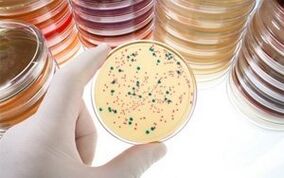
The specific research methods are known:
- The parasitological method is the detection of worms in the patient in the patient;For this purpose, a fresh part of the feces is collected and examined under a microscope.If necessary, a transport environment is used to deliver to the laboratory.
- The serological method is the detection of immunoglobulins in class M (acute phase);
- Instrumental methods (ultrasound, tomography) - with the aim of the differential diagnosis to exclude tumor processes.
The result of just one study is not an independent diagnosis.Only one doctor can rate the patient's condition, only a doctor can make a preliminary diagnosis.
Treatment
The therapy of helminthiasis should be under the control of the doctor.The independent use of antigel mika (including for prevention) is unacceptable because most medication are quite toxic.
A comprehensive approach is required, including nutrition of nutrition, medication and folk remedies.
Nutrition
There are no strict rules that regulate the nutrition for helminthiasis.It is sufficient to follow the rules of a healthy diet:
- Use a sufficient amount of dairy products with low fat;
- Include in a variety of porridge, egg shells, low -fat fats of fish and meat in diet;
- Give up alcoholic drinks;
- Semi -fixed products, soda water, reduce or exclude products with a high content of preservatives and flavor enhancers.
- All products should be washed thoroughly (vegetables, fruit, berries), if possible -thermally processed (the bifsteke with blood is not permitted) to prevent a re -in -in function.
When prescribing a certain drug, the doctor individually explains which products should be limited or completely excluded.
Drugs
In the treatment of helminthia, universal medication are used that destroy different types of helminths at the same time.
The duration of the course of treatment is selected individually.In combination with anti -parasitic medicines, hepatoprotectors and enteroses are used.
Cleaning worms
The use of some Anthelmintic agents contains its combination with an enema.The enema - an ordinary cleaning inlet - there are no functions.The doctor decides whether it is needed or not.
People's recipes
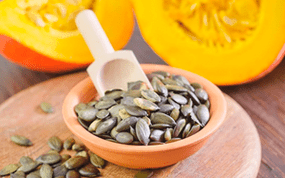
The effectiveness is doubtful.You are known to the popular people who are popular:
- Pumpkin seeds;
- Alcohol tincture from non -numerous (green) walnuts;
- Alcohol tincture of the Channelle;
- Freshly prepared broth made of pine cones.
A combination of popular regulations and traditional medication is quite allowed.
Prevention of parasitic diseases
There is no specific prevention.In view of the simplicity and lightness of the infection, it is very difficult to protect yourself from helminthic invasion.This is necessary:
- Always wash vegetables and fruit, rinse it off with boiling water;
- Prevention of storage in the refrigerator with a number of products with finished and semi -financed products;
- Wash your hands mandatory and thoroughly;
- Follow the rules of the culinary processing of dishes.




